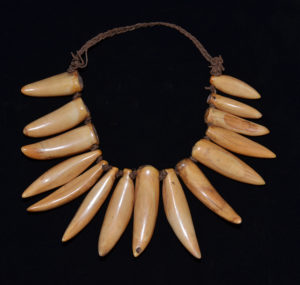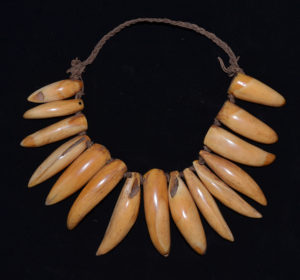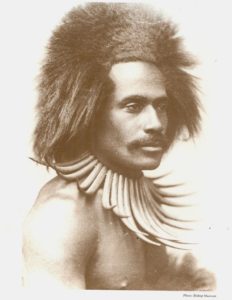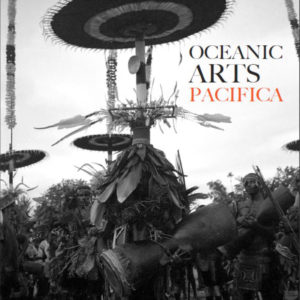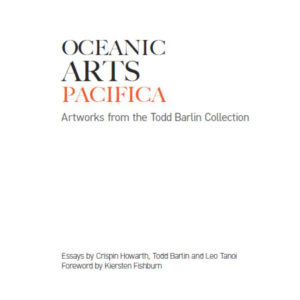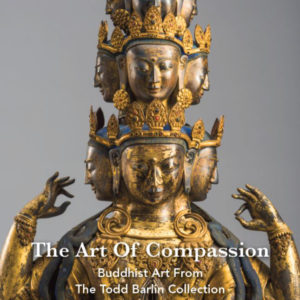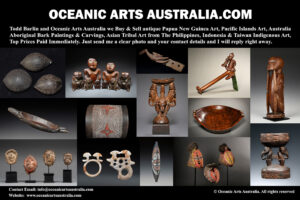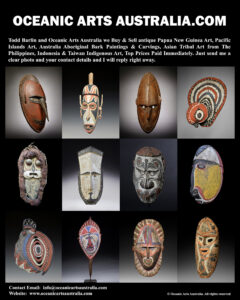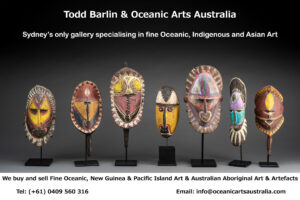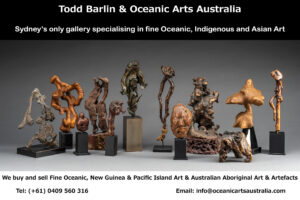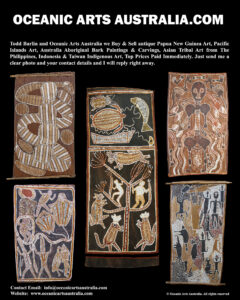A Superb Fijian Chief’s Whales Tooth Necklace Polynesia 19th Century
| Collection No. | TB-765 |
|---|---|
| Size | 28 x 30 cm (size of the individual whales’ teeth 6cm to 9cm ) |
A Superb Old Fijian Chief’s Whales Tooth Necklace called wasekaseka Polynesia 19th Century or Earlier
This superb 19th Century Fijian Whales Tooth Necklace was once worn by persons of high social status, chiefly families. The term tabua refers to a presentation whale’s tooth, the greatest of all Fijian valuables, originally taken from the lower jaw of sperm whales found stranded on Fijian beaches (whales were never hunted or killed)
They are considered by Fijians as a kavakaturanga or ‘sacred chiefly objects’. Whales Teeth in Fiji are closely associated with divine power and with chiefs as embodiments of divine ancestors.
Tabua and whale’s teeth ornaments can be found in a number of forms, each of which is an important type of traditional wealth. There is the tabua itself, a single whale’s tooth smoothed and polished into an object of great power and significance, which is gifted or exchanged at special ceremonies.
A group of Tabua which are bound together in necklaces known as wasekaseka which were worn only by chiefs and other individuals of high status. This example is of the impressive wasekaseka necklaces fashioned from tabua which have been cut and polished into tusk-like ornaments with beautiful old warm yellow patina from long use.
The gifting of tabua was traditionally a great ceremonial event in Fiji. They were given as offerings for war or peace, as tokens to symbolize marriage, or as payment of bride price. In some cases, tabua were even presented in exchange for the taking of a life. The gifting and exchange of tabua was a serious business and the recipient was bound by tradition to honour the accompanying request. Their power and significance meant that they were traditionally the possessions of chiefs and other renowned individuals
Provenance: The Todd Barlin Collection of New Guinea Oceanic & Polynesian Art
References
Andrew Arno, ‘Cobo and tabua in Fiji’ (American Ethnologist, vol. 32 no. 1, February 2005)
Fergus Clunie, Yalo i Viti (1986)
Rod Ewins, Fijian Artefacts (1982)
Frederick McCarthy, ‘The Whale’s Tooth Tambua of Fiji’ (Australian Museum Magazine, vol. 11 no. 3, 15 Sept 1953)
Asesela Ravuvu, The Fijian Ethos (1987)
Kingsley Roth, ‘A Composite ‘Tambua’ from Fiji’ (Man, vol. 37, August 1937)
Marshall Sahlins, Moana (1962)

